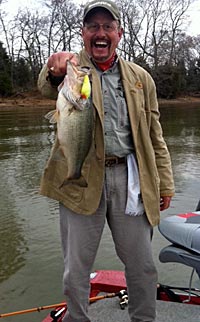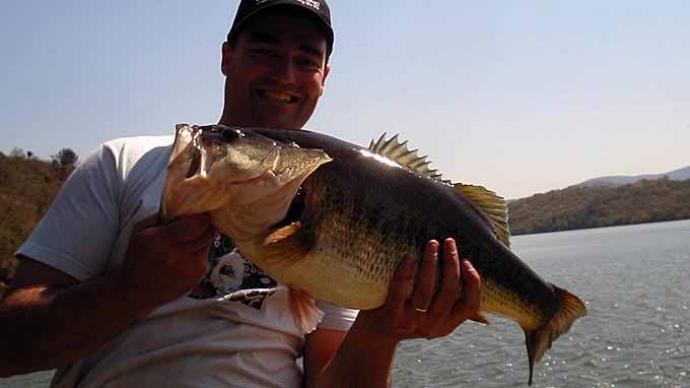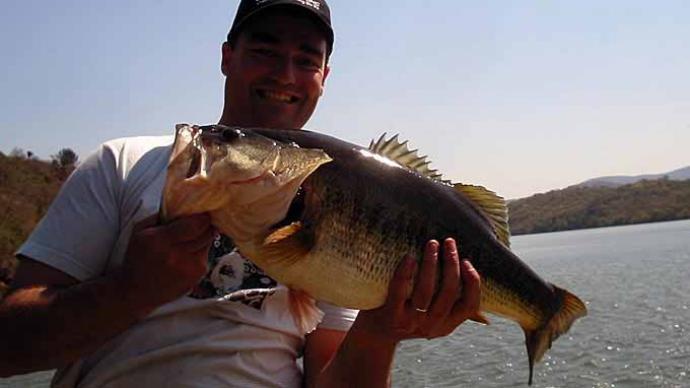
This is my favorite time of the year to compete in tournaments. Bass will relate to the off-shore structure now. Anglers must remember that most winning tournament weights will likely come from these areas rather than in the shallows.
Of course, there are always exceptions in every event, but regular water conditions will have most bass relating to some structure not cruising the shallows as they would in April or May. Finding these offshore holding areas for larger bass takes a significant investment. It takes time and looking. You must have the best map that you can find of the lake. This will help you get some idea of potential honey holes.
If you are familiar with the lake where your tournament will be, start close to some structure with good spawning areas nearby. I have found that if you can find a good hump, tank dam, point, or brush in the area, the potential exists for concentrations of fish. Big fish are also likely to be in the area.
Finding these hot spots has never been easy for me. Very seldom have I just looked at a map and decided a particular spot looked right, went to it, and caught a bunch of good-sized bass. Instead, I usually find that fish are holding in just one area or little spot on the structure.
An excellent example of this happened to me in a tournament on Richland-Chambers. In practice, I studied the map and noticed some contour lines forming an underwater point. What I mean by this is everyone knows what a point above the water looks like and that they are good places to fish. Try studying a map. Ignore the regular shoreline contours, but move out to the 10-foot lines. Now, imagine these are shorelines and look for points and other structures that way. Doing this will give you a better picture of what you're fishing for and what to look for.
On this very underwater point at Richland-Chambers, on my first cast with a Carolina rig, I landed a solid six-pounder. The following five casts produced pickups I didn't set the hook on. No boats were in sight except one with occupants fishing the bank with spinnerbaits. So, I moved around the shallower and deeper point to look it over better. It was amazing how many bites I was getting. No matter where I moved, the bass were there. I finally cut the point of my hook off because two of the bites wouldn't let go and hooked themselves. Both were over five pounds each.
These fish were actively feeding, but of course, it was practice day. I don't know why they won't do this for us on tournament day. At any rate, the boat at the shoreline was slowly working its way out to where I was. I moved toward them to keep the occupants from getting on these fish. When we got close enough to each other and began talking, I found out they weren't entered in the same event. They were fishing at a club event. Even while we were talking, bass were hammering my Carolina rig. Finally, one about five pounds came to the surface and jumped to spit out my French fry.
At about 10:30 a.m., I worked out a deal with the people in the other boat. They would anchor on the spot to keep other boats off of it, and I would share some of the fish with them. When I returned, the lady had caught her biggest bass in a tournament, and they had put a couple of fish in the livewell. They had quit fishing and were waiting for me to return so they could go elsewhere to finish out their limit.
My partner and I anchored near the point the next day at the earliest legal time allowed. We didn't want to take a chance of anyone else being on that spot. We even launched at a ramp farther away from the weigh-in site because it was closer to the area.
We started fishing at 6:00 a.m., but by 8:00 a.m., we were still waiting for the first bite. Sound familiar? Things changed by 8:30 that morning. My partner, Bruce Rasco, had landed seven fish. The best five of these weighed over 19 pounds.
We both stood on the back deck, throwing the same bait to the same tree, but all I was getting was net practice. I switched from the 10-inch Power Worm to a 6-inch lizard and, on the first cast, lost one that I couldn't turn. The second cast brought a 7.70 into the boat. During the next half an hour, we culled every fish my partner had caught. Every fish came from that one tree. We caught over 30 pounds that day and landed over 25 keepers.
What this shows is that there will always be a particular sweet spot. If bass are active, anyone can weigh that big bag of fish. It takes looking closer and being persistent to find that spot.
Since that tournament, I can almost always catch a bass or two from that same tree. The trouble is that now you have to take a number to even get on the same point with it. So, I went back to the drawing board, but I'm confident I can locate another tree with similar structure, cover, and location qualities. I just hope it, too, holds over 30 pounds of fish. One thing is sure. You can't do it if you don't try.
Good luck at the weigh-in.
Bill Wilcox is sponsored by Ranger Boats, Yamaha Outboards, MCMC, BG Products, Pro Rule, Johnson Fiberglass, Brown's Automotive, Continental Batteries, Kistler Rods, Swamp Hog Lures, Strike King Lures, and Fun-n-Sun Sports Center.




